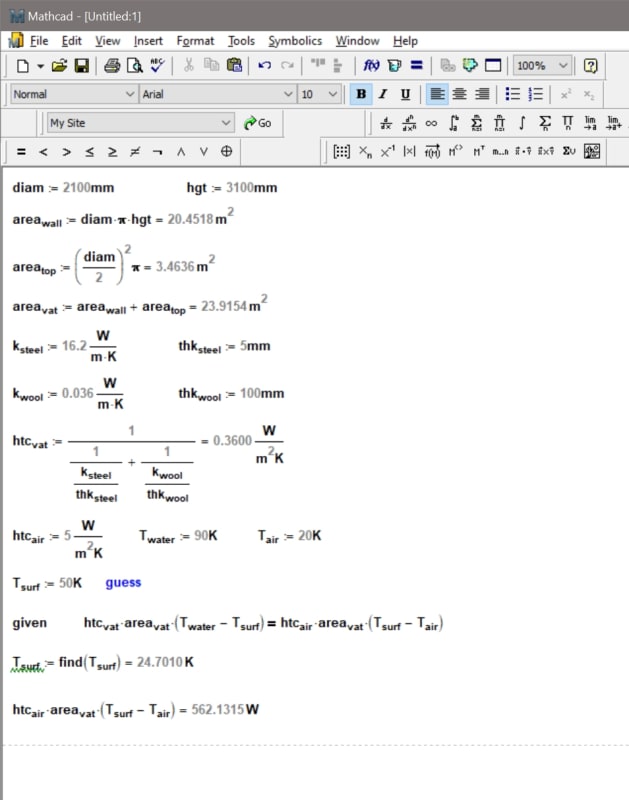vij36
Electrical
- Dec 27, 2018
- 134
Dear All,
I would like to calculate heat loss of hot water stored in an SS 304 tank
Water temperature 90 C
Dia of tank 2100 mm
Height 3100
shell Thickness 5 mm
rockwool insulation 100 mm
K 0.036 W/m-k
SS 304 K value 16.2 W/m-k (this is at 100 C. I don't know K value at 90 C)
combined K 0.036 (1/(1/16.2 + 1/0.036))
I am referring this formula from
[link conductive heat transfer through a pot wall][/url]
This results in 3800 watts. screenshot of calculation attached
So what would be the heat loss in degree centigrade if the tank is exposed to open air for a duration of 10 hrs.
Thanks,
I would like to calculate heat loss of hot water stored in an SS 304 tank
Water temperature 90 C
Dia of tank 2100 mm
Height 3100
shell Thickness 5 mm
rockwool insulation 100 mm
K 0.036 W/m-k
SS 304 K value 16.2 W/m-k (this is at 100 C. I don't know K value at 90 C)
combined K 0.036 (1/(1/16.2 + 1/0.036))
I am referring this formula from
[link conductive heat transfer through a pot wall][/url]
This results in 3800 watts. screenshot of calculation attached
So what would be the heat loss in degree centigrade if the tank is exposed to open air for a duration of 10 hrs.
Thanks,

